OPEN GEOMETRIES
Purdy Hicks
65 Hopton Street, Bankside London SE1 9GZ
17 February – 18 March 2006
“These new paintings by Thompson are demanding, both visually and imaginatively. Their imagery made through what is to all intents and purposes the simplest of means, they nevertheless unfold into complex spatial configurations.
Rhythmically varied, they speak with intensity to the traditions of painting on which they draw and to which, in turn, they contribute. And in their sensuous richness, they engage that mix of somatic, intellectual and emotional activity in the body as it seeks to orient itself in the world.”
Michael Archer
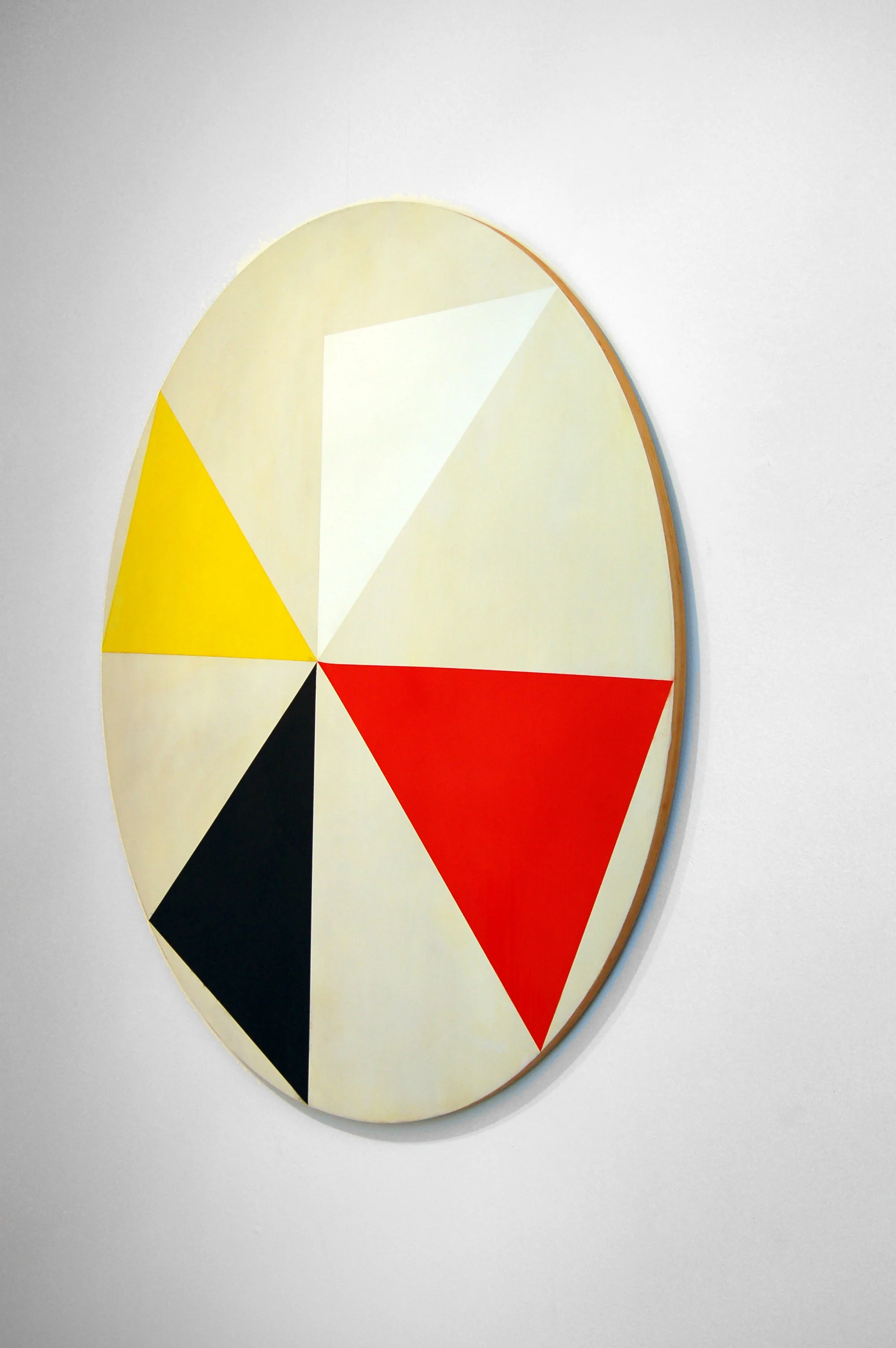
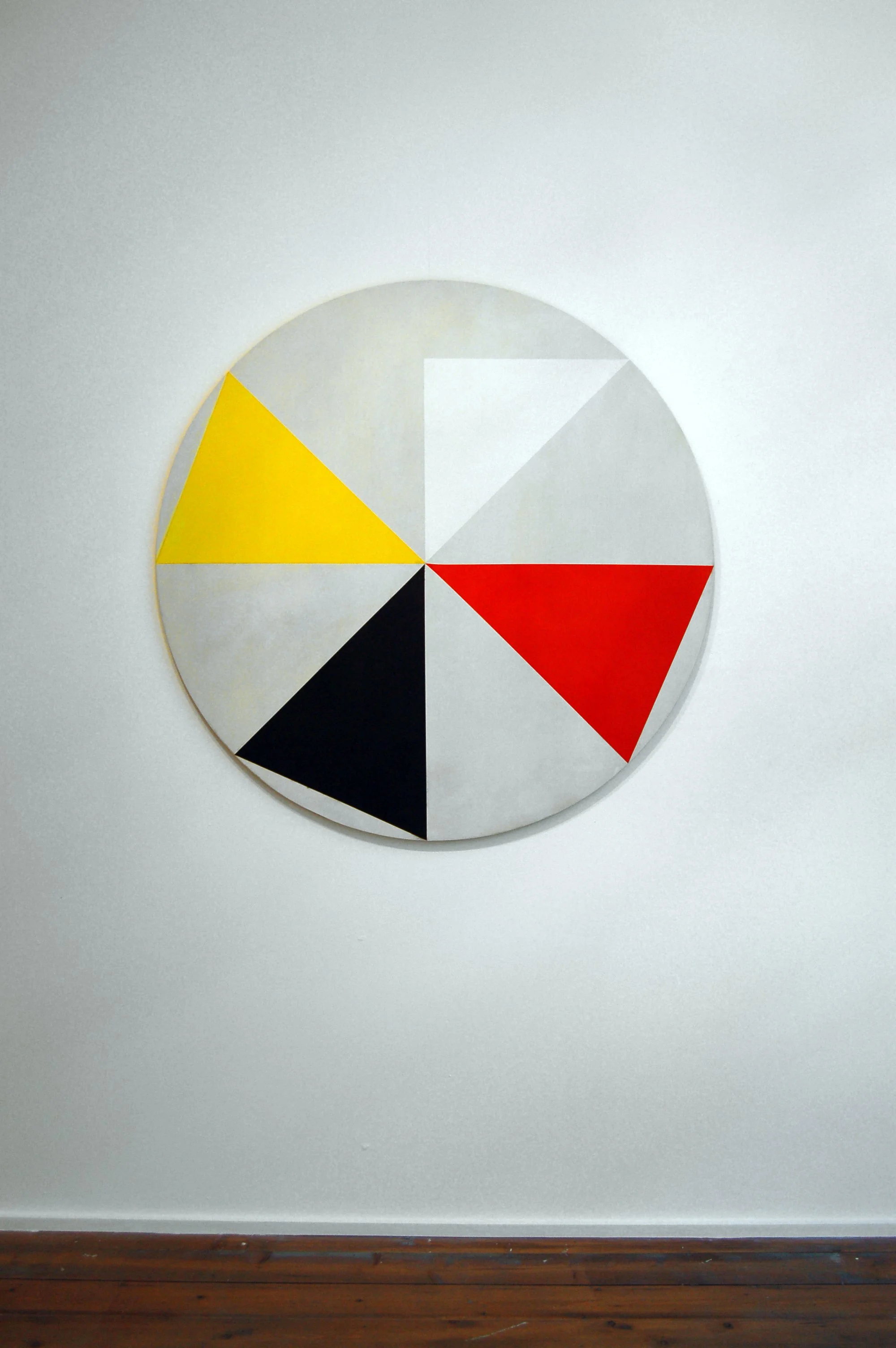
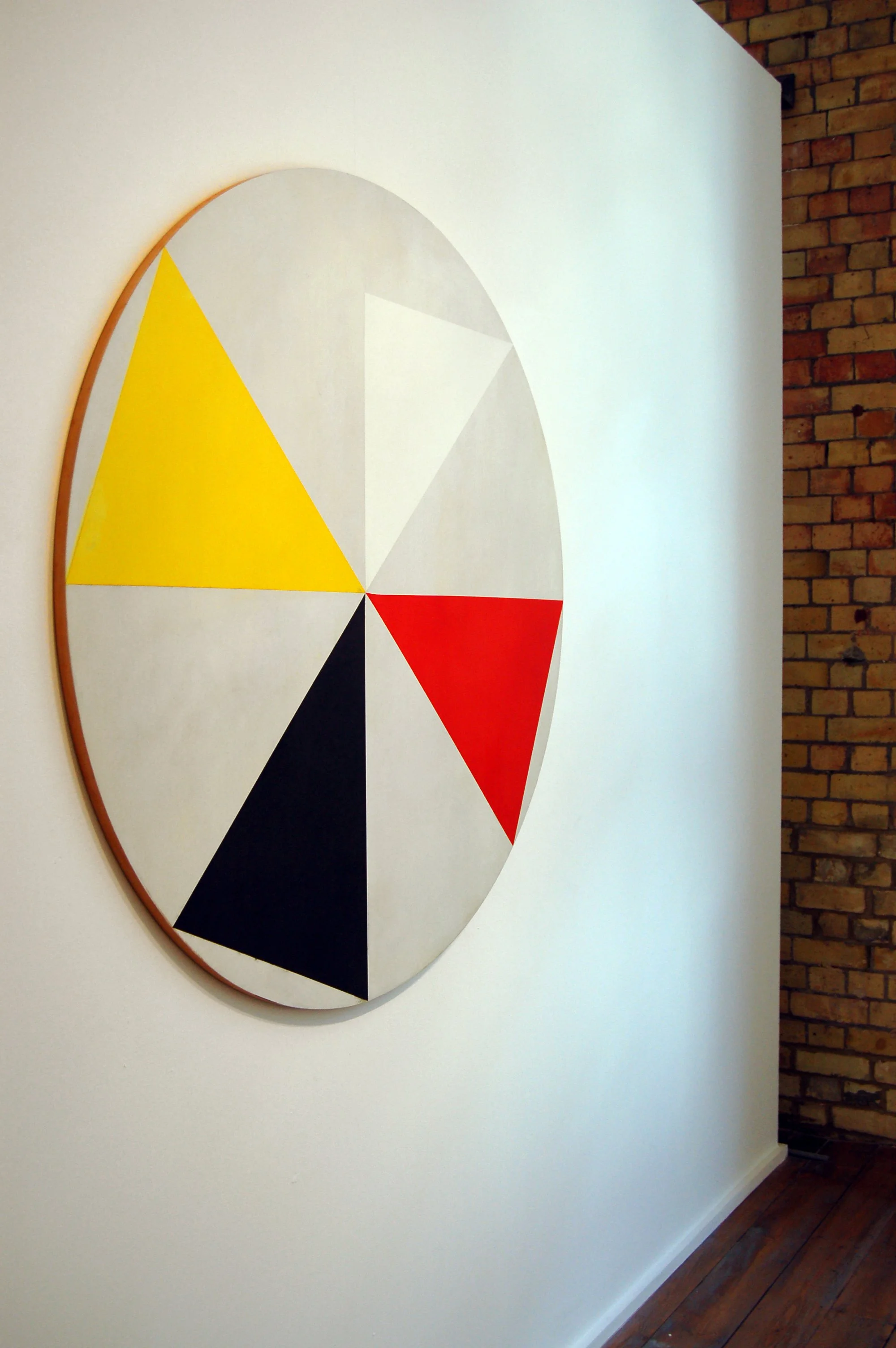
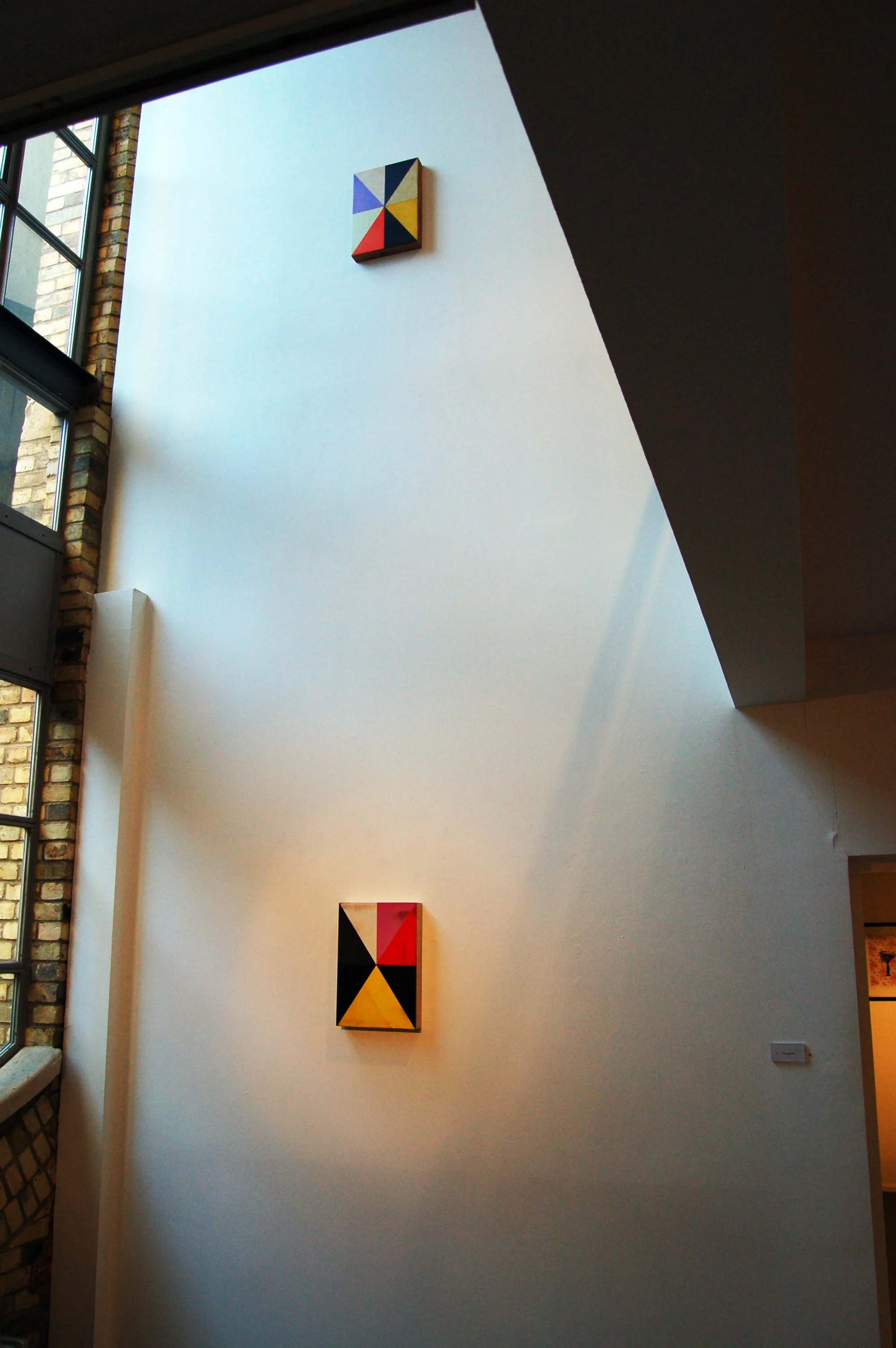

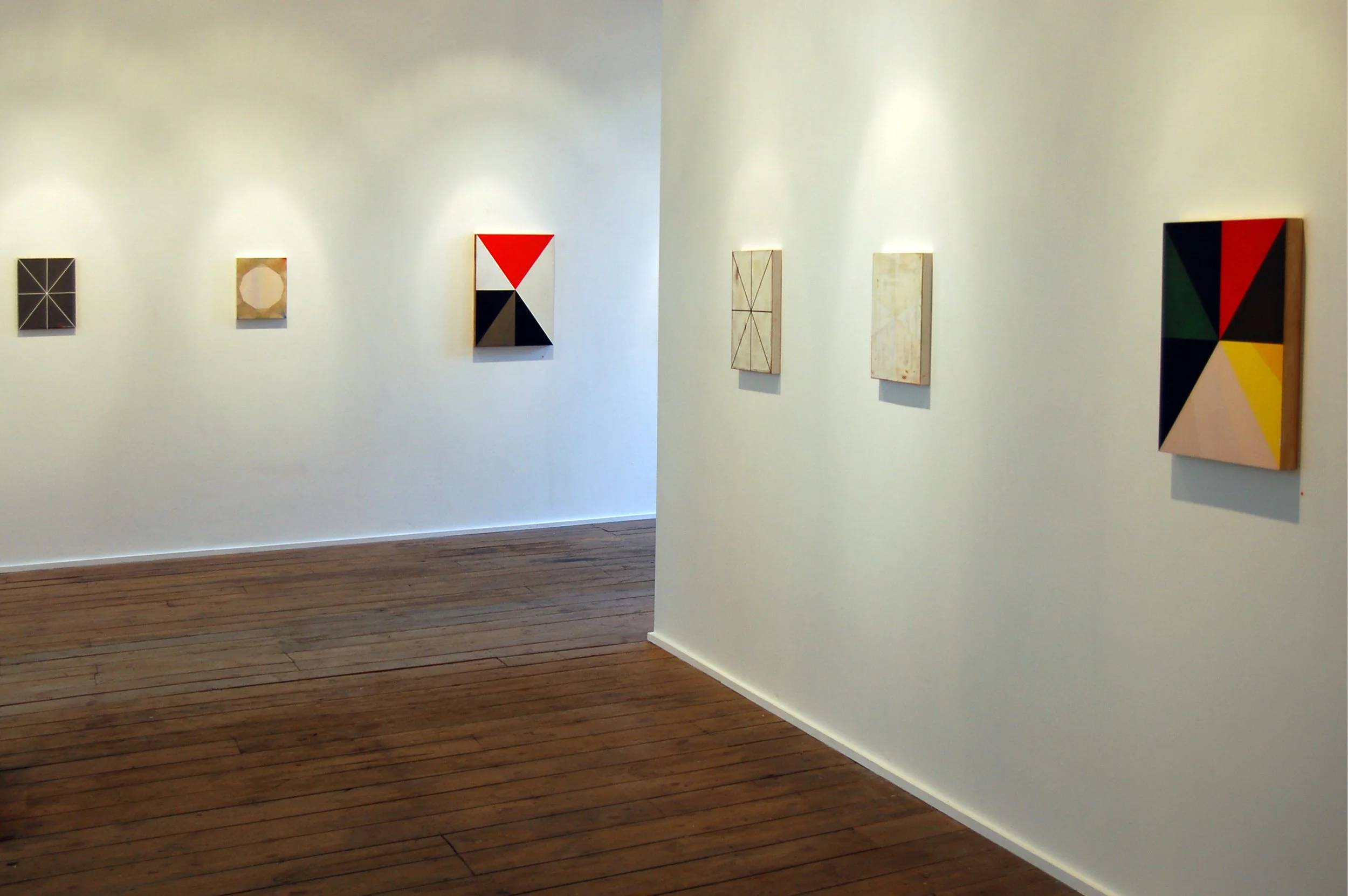
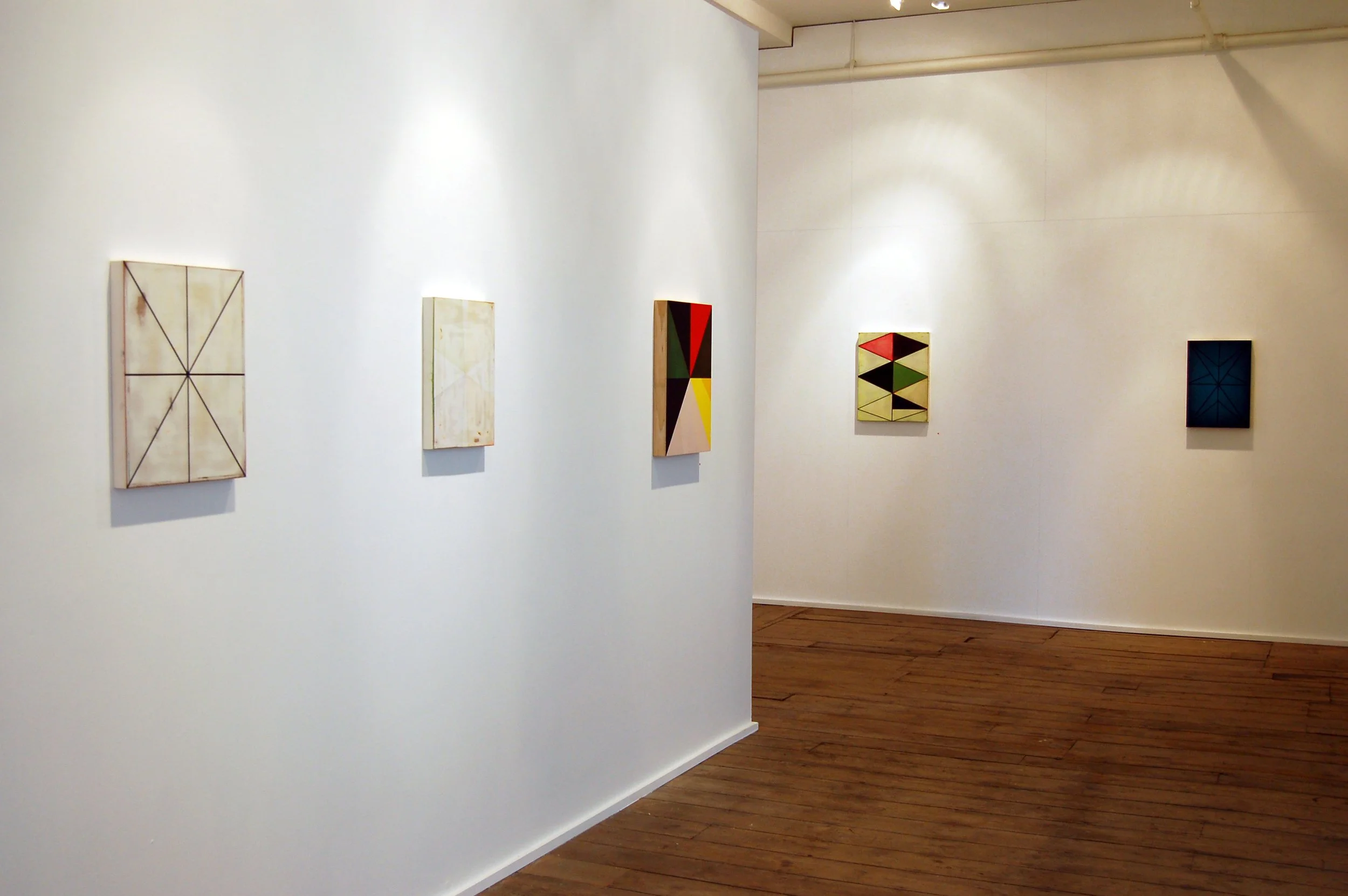

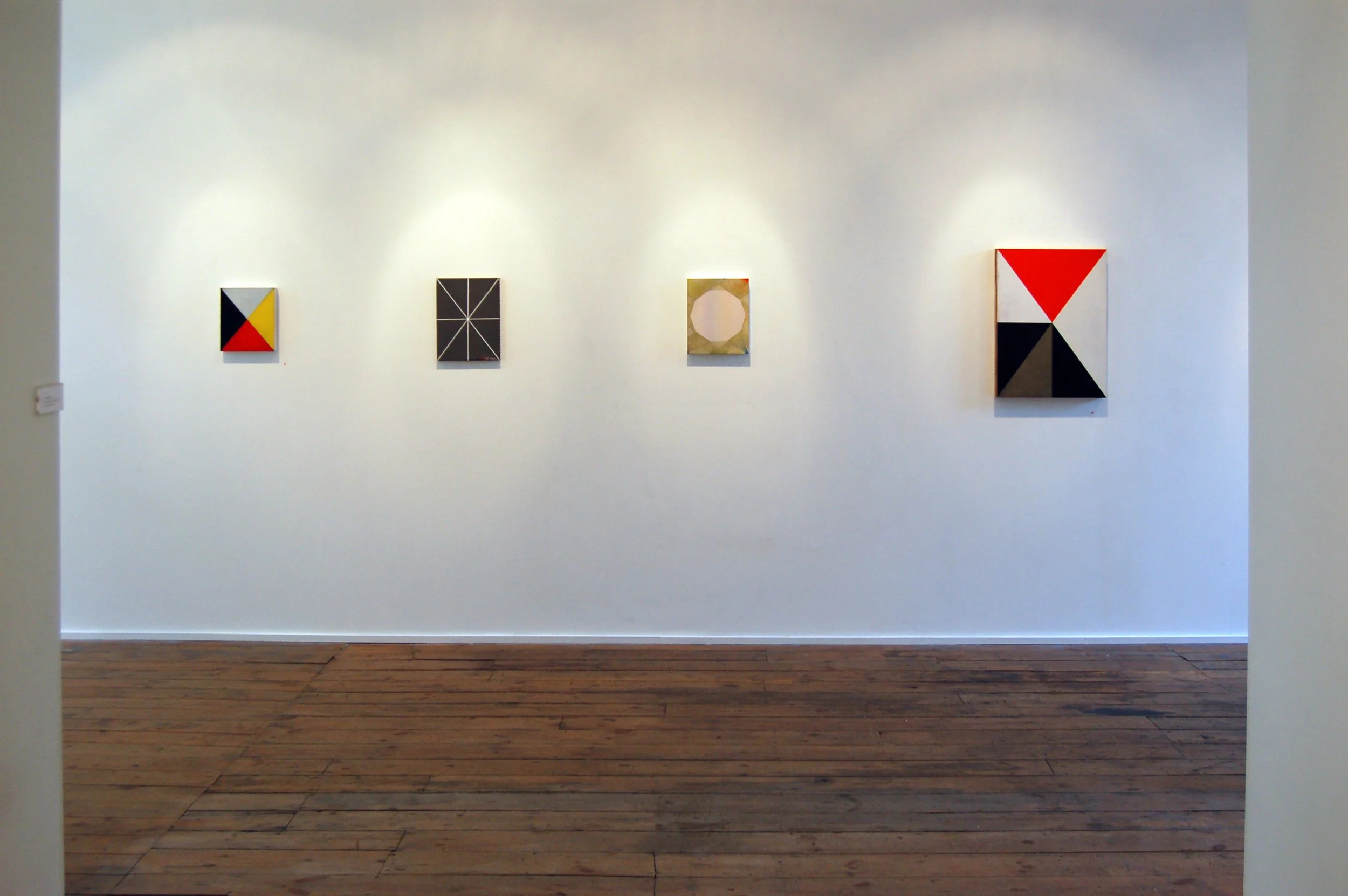


OPEN GEOMETRIES
Abracadabra — an incantation, a calling-forth; a well-known term, yet still a word of mystery, often pronounced to the accompaniment of a simple waving of the hand down across the body from one side and then from the other. The X shape that this bodily movement marks out in the air is visible on the ghostly surface of Estelle Thompson’s painting of the same name, Abracadabra. In fact, it is more than visible. Its repeated form creates an echo, a sense of depth to the image, and the feeling both of structure and light. Substance conjured from luminosity, the effect is all the more startling given the stress marks around all four edges of the painting, betraying the existence of a previous, very different phase of the work.
Thompson’s new paintings present a different set of articulations, a new vocabulary of lines and forms, from those seen in her last show. The dimensions of the boards on which she paints are in the same range as before, but the scale of the works covers a large spectrum, evoking as they do, spatial experiences stretching from the intimate and domestic to the cosmic. Many of the paintings in this current series use the same basic set of spatial articulations: lines that bisect the picture surface vertically, horizontally, and diagonally left and right. What these operations lead to, however, is very far from a dry or exhaustive tour through all the possible combinations. It is rather that the same lines, reappearing from painting to painting, provide what Sol LeWitt referred to as the ‘grammar’ for the works. There is no particular system in play here. On occasion, the result arrives swiftly and the surface is only lightly covered. At other times, the process is much more protracted, with early layers being smoothed down, sometimes back to the original board, before working up begins again.
In Stellar, for example, the paint surface has been abraded to an extreme degree so that in several areas around the edges and in two distinct patches in the left half of the painting, its skin has been worn away completely to reveal the MDF board underneath, before the addition of the black dividing lines.
Stellar, it seems to me, is a key work, reduced as it is both in its physical state and its name, to the essential status of a star, a guide. In other instances amongst this group of paintings, one or more of the marked-out areas are filled with color, but Stellar is as pared down as it could be: a black star of four lines painted over a distressed, largely white ground. One recalls Donald Judd’s straightforward account of Barnett Newman’s Shining Forth, To George, in the course of which he reveals how three black lines painted onto an otherwise blank white canvas can cause that white to shimmer transcendently for the viewer. In its clear, fragile, and almost ascetic beauty, Stellar stands in contrast to Gone, the oldest—or, more accurately, the longest worked-on—of the paintings here, whose dark surface with its flecks, subtleties, and shifts in intensity, acts to cover, if not quite obliterate, the image underneath.
The colors in several of the paintings, such as The Zero of Form, The Faithful Eye, and Chroma Chora, elicit strong associations. Red, yellow, black, and white call up the post-revolutionary art of Varvara Stepanova, Alexander Rodchenko, and others: bold, uninflected colors that spoke to the immediate demands of the time.
We might think to call this a reference and then ponder a possible relationship between, say, The Zero of Form and Stepanova’s notion of construction in art-making as ‘expedient organization.’ Thompson, though, would not want to be anywhere near as explicit as that. To describe something as a reference is to impose a certain logic upon the imagery, as if one were to assert that this element here has been introduced for such and such a reason. Speaking in those terms does not sit well with the much more intuitive and responsive attitude in which these paintings are made. Thompson’s preferred way of talking about this aspect of her work is to speak of ‘elements that call association.’ These elements might indeed have their beginnings in any number of places, since the merest detail of any painting—a fold of cloth, a fabric pattern, a patch of tiled flooring, the vectors set up by interrelated bodies—can strike the eye as non-representational when isolated from its context.
The apparent geometric certainties of Thompson’s paintings are only so many physical and visual facts that act as starting points from which the eye and mind are led in many different directions. Constructivism might perhaps be part of the discussion opened up by these paintings, but so quite possibly, in the lozenge-shaped tessellations of The Transrational and Here We Stand, are Picasso’s harlequins.
And merely to say that is to instigate a more searching look that focuses on the indistinct pale band running from top to bottom down Here We Stand. It suggests light falling on a surface in such a way that that surface could only be horizontal, a visual conundrum that confounds the easy categorization of Thompson’s work as abstract. For if the criss-crossed diagonals of Here We Stand foster the illusion of a horizontal ground, that requires us to deal with quite another, illusory kind of space construction.
While the use of board as a support surface may well provide a sturdy ground for Thompson’s visual experimentation, the perception of this steadfastness is misleading. The flatness is emphasized and returned to time and again in the structuring, painting, reducing, and repainting of the image, but the visual experience of what results is invariably impossible to reconcile with any sense of an implacable planarity. Line and color cause the surface to bend, flip, fold, and turn, layering institutes a certain kind of dimensionality whose depth is temporal as much as spatial, and frequently the eye is pulled into a distance beyond the surface. Prismism could be an aperture, or a Buckminster Fuller-inspired structure, or a crystal, among many other things, but as its name implies, it is at least all of these and more. What we see refracted onto its surface are the shards of light scattered through the visual, material, and ideological screens of each and every modernist tendency. It gives a perspective on what has gone and uses that legacy as the means with which to fashion a viewing point out into the future.
Time and again, of course, a perspectival reading is unavoidable due to the way in which the bisecting horizontals, verticals, and diagonals meet at the center of the painting’s rectangle. It is a supreme vanishing point, though one that, because of Thompson’s technique of habitually marking the lines over the painting of the areas they delineate, is strongly present in the forefront of the viewer’s visual field. It is therefore both physically nearest to, and conceptually furthest away from the viewer's eye at one and the same time. The eye’s habit of reading the center of many paintings as a vanishing point allows for a certain kind of optical travel into the sometimes limitless space of the painting. This is certainly true of Stellar, The Zero of Form, and, in particular, The Faithful Eye, but in other cases, there is a quite different sense of movement. Chroma Chora’s equally sized triangles spin in the imagination, the two stark white areas to top left and bottom right standing out from the surface in a way that seems to suggest something almost mechanical in the painting’s structuring. Dreamer is, as its title implies, more meditative, the pattern of lines attracted to the dividing vertical as if spinning around the painting’s central axis. Two of the gold-framed triangles of Static Dynamic, one blue, the other inflected with red, yellow, and black but otherwise open to the underpainting, want to turn like the sails of a windmill. They are bounded by a diagonal that has been drawn at a shallower angle than usual. It meets the sides slightly away from the corners, with the effect that a square is described within, or on top of, the rectangle of the painting. But these are paired with two other areas, the long sides of which are anchored along the edges of the painting, holding the pattern fast and preventing it from rotating. The tension between the conflicting impulses to movement and stasis is made more telling by the unavoidable hint in Static Dynamic’s network of golden lines of a fylfot cross. Making Good is different again; it is a dance, the incident skipping from one side to the other of the single diagonal as it travels from top left to bottom right of the picture.
These new paintings by Thompson are demanding, both visually and imaginatively. Their imagery, made through what is to all intents and purposes the simplest of means, they nevertheless unfold into complex spatial configurations. Rhythmically varied, they speak with intensity to the traditions of painting on which they draw and to which, in turn, they contribute. And in their sensuous richness, they engage that mix of somatic, intellectual, and emotional activity in the body as it seeks to orient itself in the world.
Michael Archer
